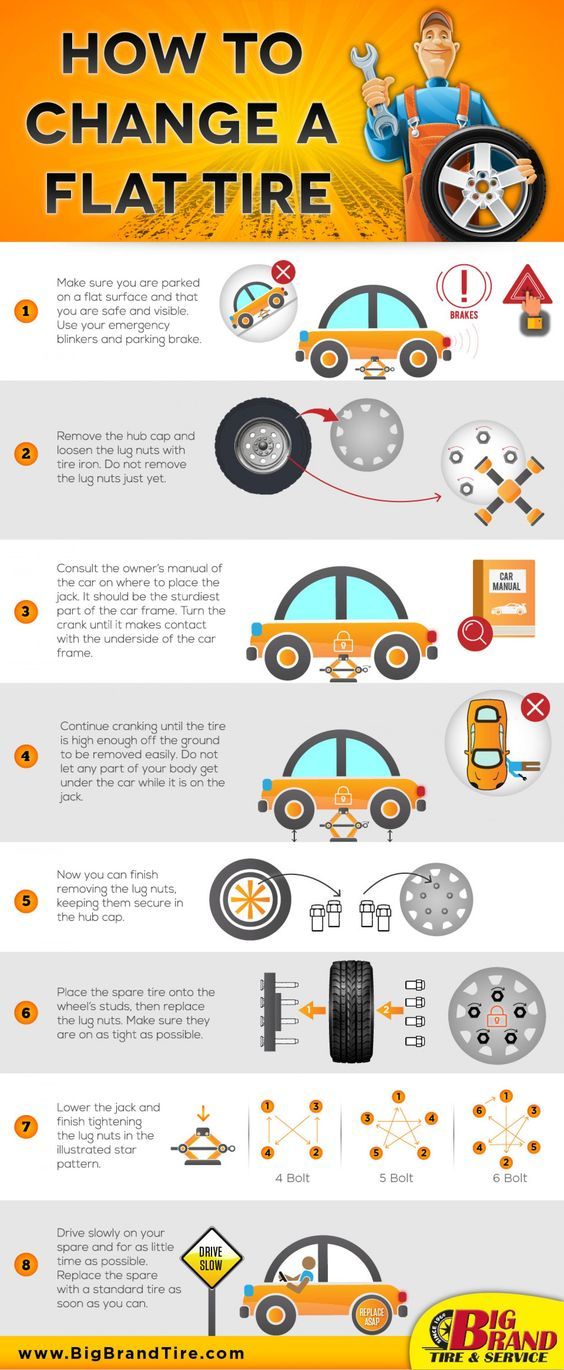It’s always a nightmare for a car owner to hear of a flat tire. As scary as it may sound, double the trouble if you don’t have a spare tire. You can also triple it if you are in an emergency or hurry to attend a meeting.
How far can you drive or squeeze with a flat tire? The answer is zero miles unless you use run-flat tires. Stop the car and change the tire whenever you get a puncture. You may call the nearest tire shop for roadside assistance if you don’t have a spare tire.
However, if all fails, you can drive slowly and carefully, but your destination should be relatively near. And it shouldn’t be any destination rather than the tire shop. Learn more about the risks of driving with a flat tire on the next topic.
Why Don’t Experts Recommend Driving on a Flat Tire?
One of the risks that may occur while driving with a flat tire is traction loss. Experts warn about this because it can result in severe road accidents. Secondly, you expose your vehicle to more damage which can cost you more on repairs. The tire rim is the most vulnerable part if driven with a puncture or low air pressure.
Suppose you must drive for a short distance to reach the tire shop, maintain a speed of 50 mph or less, and ensure better vehicle control. However, if you completely lose the tire pressure or get to a road with potholes, driving even at 5 mph is very risky.
What Is the Best Solution for a Flat Tire?
We often drive long distances and in areas without access to repair shops. As such, we recommend having a spare tire always. Note that a spare tire is also a recommendation in many state traffic laws. But apart from that, it saves you the hassle of finding a tire shop in an emergency. Additionally, it saves time and also saves you from driving slowly.
How Long Can You Drive on a Spare Tire?
You can drive for 50 miles with a spare tire. Most spare tires, like donut types, are designed for short drives to find the nearest repair services.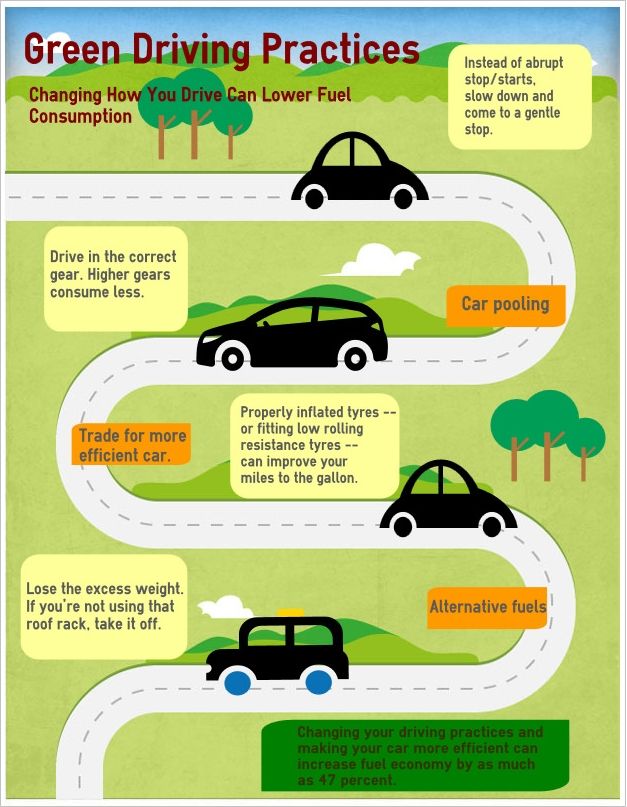 However, this short-term use can save you much in case you are in an emergency. Most drivers stretch it to even 70 miles if they don’t find a repair shop nearer. This is better because you can reach your destination and choose to fix the puncture later. Ideally, check the owner’s manual to know the exact number of miles you can drive.
However, this short-term use can save you much in case you are in an emergency. Most drivers stretch it to even 70 miles if they don’t find a repair shop nearer. This is better because you can reach your destination and choose to fix the puncture later. Ideally, check the owner’s manual to know the exact number of miles you can drive.
How to Replace a Flat Tire
In case you have a spare tire, you can carry out the following procedure to replace the flat tire and resume your journey:
How Can I Prevent a Flat Tire?
Although you may not entirely avoid a flat tire, you can do simple practices to minimize the chances of facing the risk.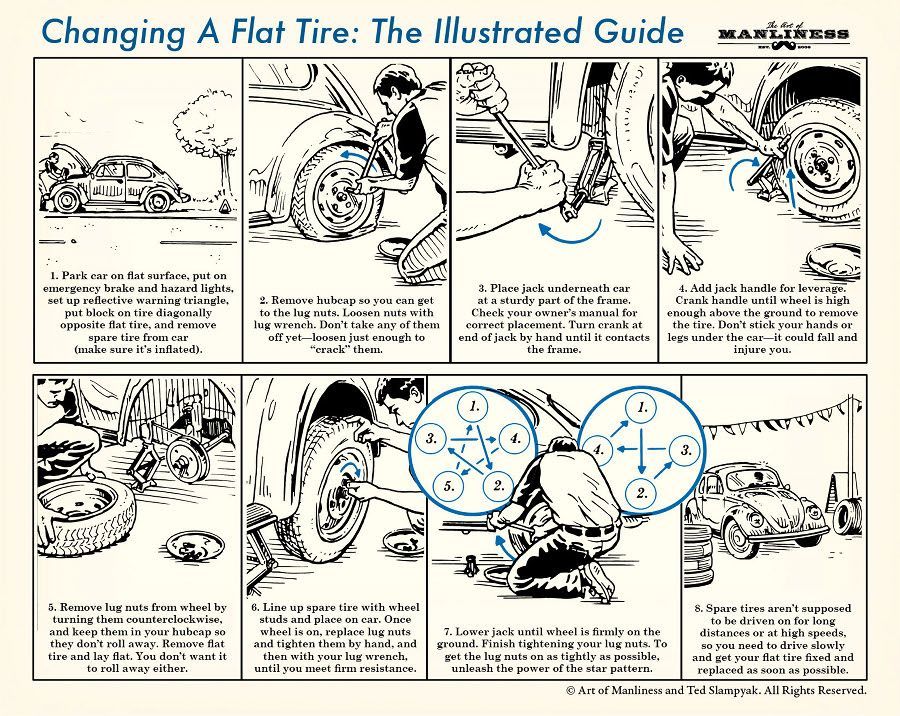 Regularly check tire pressure, avoid overloading, rotate your tires when they achieve the recommended mileage, and change any old tires. Contact us today at TreadNation to learn more about new tires and care tips.
Regularly check tire pressure, avoid overloading, rotate your tires when they achieve the recommended mileage, and change any old tires. Contact us today at TreadNation to learn more about new tires and care tips.
Every car owner’s nightmare is a flat tire. Double that if you don’t have a spare tire around, and make it triple when you’re in an emergency. If you’re wondering how many miles you can squeeze on your flat tire. It’s 50 miles or 80.4 kilometers.
However, you should drive slowly on a flat tire since it doesn’t have much traction or durability. Not to mention the potential of an accident when driving with a flat tire damage.
If you still have lingering questions regarding how far can you drive on a flat tire. Read on to learn more.
Table of Contents
If you must drive with a popped tire then make sure that where you’re going is relatively near.
The limit is 50 miles just right after the tire got punctured. However, you must prepare for any potential damage to your car.
However, flat tires shouldn’t be driven long distances. You’ll risk damaging your vehicle more, notably the wheels, brakes, and other parts such as your suspension and steering system.
Damage to these vehicle systems can drastically reduce handling, not to mention repair costs.
It’s tempting to drive a short distance on a flat tire. However, it’s better to drive on a spare tire instead, provided you have one ready.
If you don’t have considerable damage to it, the puncture could potentially be plugged and save you the hassle and money of getting a new one.
Suppose you need to drive a short distance on a flat tire. Just make sure that you’re going slowly.
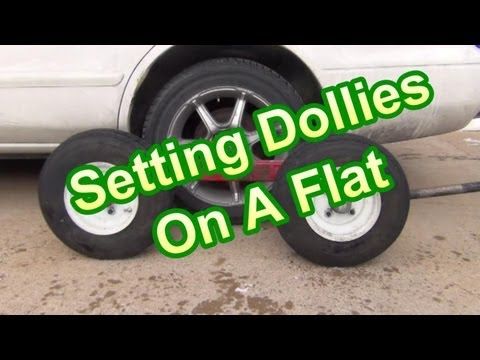
If you’re asking, “can I drive a flat tire 2 miles?” .5 more than the recommended distance. Technically you can, but you’ll have to be ready for additional vehicle damage.
Furthermore, the most significant scare would be traffic accidents. As your car mishandles, the chances of getting traffic accidents rise exponentially.
One unintentional turn or stoppage when you ride on a flat tire is a one-way ticket to disaster.
Spare tires are essential when you’re driving. Having one can save you the hassle of driving slowly yet dangerously as you go on a flat tire, not to mention that a spare tire is a requirement in most state traffic laws.
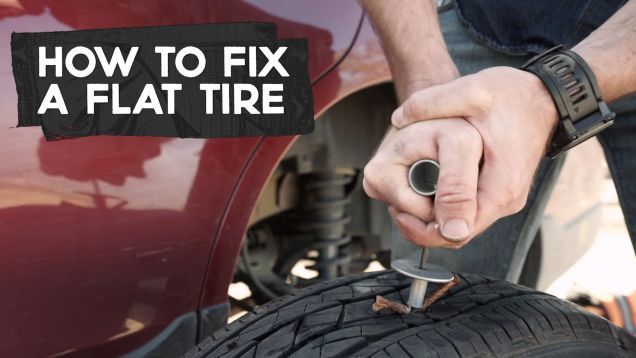
Luckily, this is a lot better than driving on a flat tire. The time and hassle of changing a flat tire are worth it.
Spare tires are, as the name suggests, a spare. When driving with one, ensure you find the right kind of wheels for your car as soon as possible. Not only would this dramatically improve your handling, but you’ll mitigate the risk of popping another tire, this time without a spare.
When replacing a flat tire with a spare, you must follow several steps to ensure safer and more efficient work. These steps apply to your front or rear tire.
Step 1: Make sure you pull over safelyIf you decide to change your tires instead of driving on, pull over on the safe side of the road.
Also, place a warning device to let oncoming traffic know you’re in a dire situation.
Step 2: Make sure you have tools and a spare tireYou’ll need at least three tools when changing a tire on your vehicle.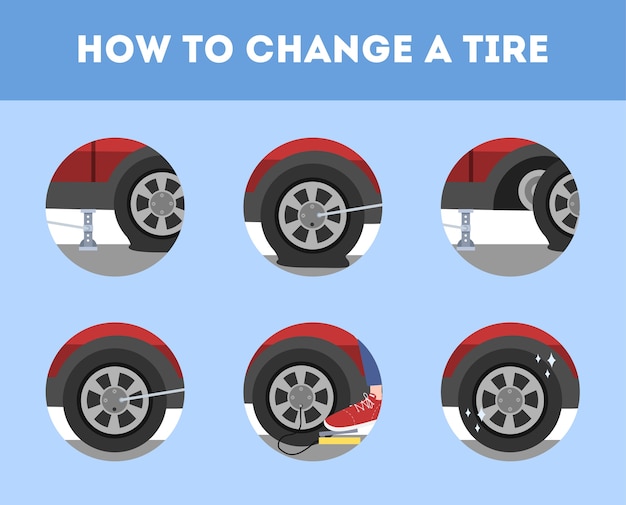
Additional tools can be:
Using a tire iron, loosen each lug nut on your wheels until you can easily turn them manually with your hands.
Step 4: Lift the vehicleRaise your car by placing the jack underneath the metal part of your vehicle. Avoid placing it under the plastic frame.
To best do this step, consider referring to your owner’s manual for additional assistance.
Step 5: Remove the tireCarefully remove your tire by removing the lug nuts. Ensure that the lug nuts are in a safe box. Then, pull the tire towards you to take it out.
Step 6: Place the spare tireCarefully place your spare tire, and using your hands, place the lug nuts, but don’t secure them just yet.
Lower your car and tighten the lug nuts while the tire slowly touches the ground.
Step 8: Ultimately, lower your vehicleLower your car and secure the lug nuts as tight as possible. You’re now ready to drive your vehicle.
I quickly looked through Reddit for some pro tips, and I saw that u/Grosse Fahrt advised that a donut spare can potentially damage the drivetrain if you place it on your drive axle. So a spare full-sized identical wheel is better to keep around.
There are many ways to prevent a flat tire, as prevention is better than cure. However, you must also be ready as even the most vigilant drivers can still have one, mainly due to wear and tear.
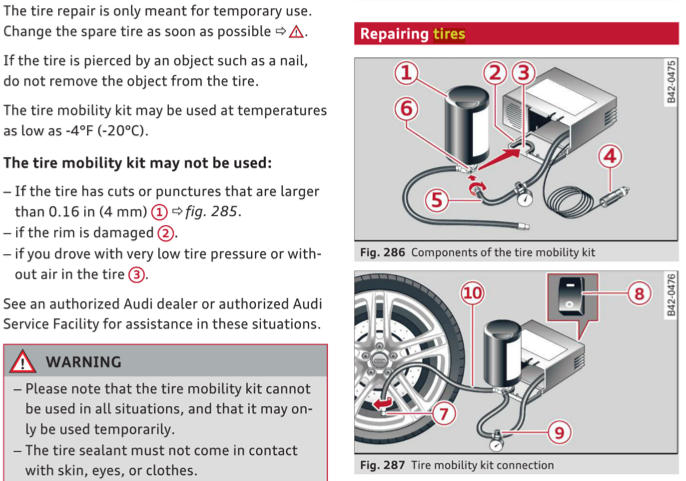
Most of us have driven on a flat tire at some point.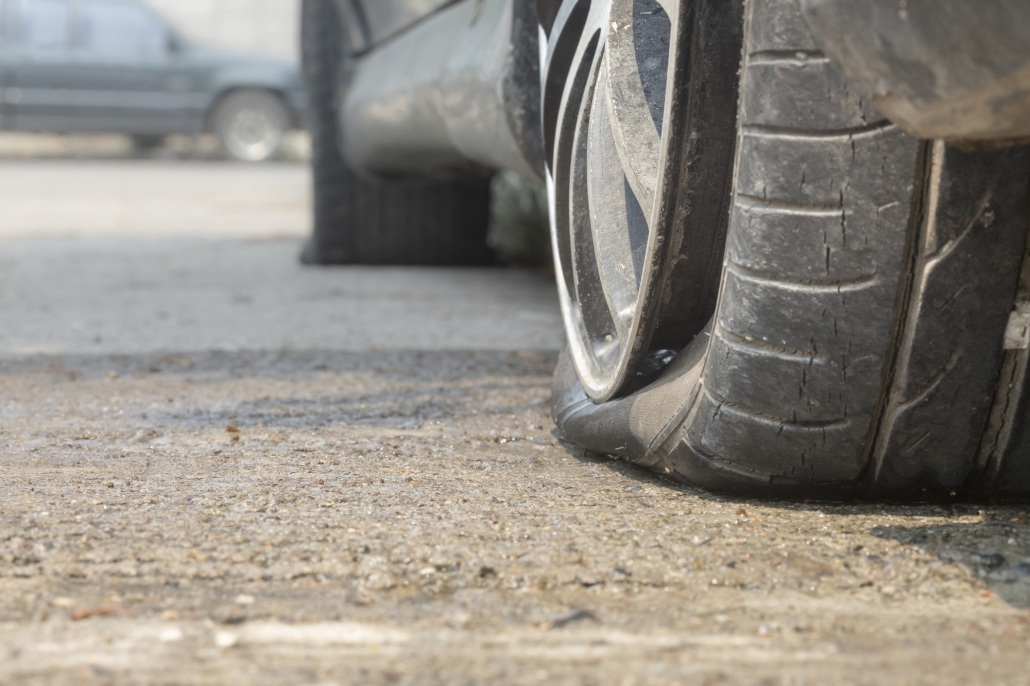 Whether for a short period or longer, driving on a flat tire is never something you want to do.
Whether for a short period or longer, driving on a flat tire is never something you want to do.
Certain factors might cause you to drive with a flat tire, such as lack of spare tire, limited ability to change the tire along the way, etc.
Knowing “how far can you drive on a flat tire” will help you get out of the situation without damaging your vehicle or, most importantly, yourself if you are ever in this position.
Maxim Stroker
Anything happens on the road, including punctures, cuts and other damage to tires. Most automakers are trying to complete their cars for the Russian market, if not with a full-fledged spare wheel, then at least with a "roll-out". However, some car models instead receive only a can of “anti-puncture chemistry”, which, after pumping into the wheel, in theory, should close up a hole in the rubber by itself. However, it happens that either the "stowaway" with the "reserve" was out of order even earlier, or the hole in the wheel is such that no magic "chemistry" can cope - for example, in the case of a side cut.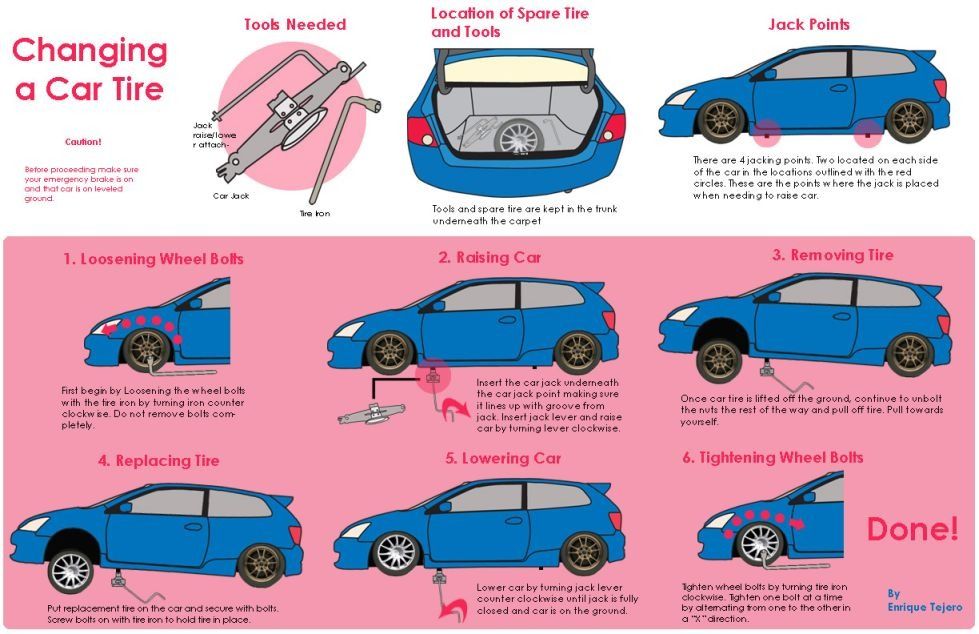 And what to do in such a situation? Somehow you need to get to the tire fitting!
And what to do in such a situation? Somehow you need to get to the tire fitting!
The question immediately arises: is it possible to somehow get to this roadside establishment on a flat tire? In some cases, yes, this is acceptable. For example, when the rubber received relatively little damage, that is, a hole through which air escapes not immediately, but after some time. In this case, it is important to remember that you can ride on the wheel without fear of damaging the rubber exactly as long as there is at least a thin layer of air between its part adjacent to the ground and the disk. This means that if we inflate the wheel to the maximum and drive quickly, then we will have every chance to get to the tire fitting point under our own power - "short dashes", with periodic stops for new pumping of the deflating wheel.
Of course, you don’t need to drive fast, avoid holes and bumps, and also don’t make sudden maneuvers - firstly, so as not to lose control of the car and not disassemble the flat tire. But if there is no air gap between the rubber and the disk, you cannot ride on a flat tire. In this case, the metal of the disk will roll directly over the rubber, "chewing" and cutting its surface from the inside, damaging the cord and so on. In other words, in case of serious damage to the wheel, when no matter how you pump it up, and the air returns to the atmosphere without lingering inside, you cannot drive on a flat tire.
But if there is no air gap between the rubber and the disk, you cannot ride on a flat tire. In this case, the metal of the disk will roll directly over the rubber, "chewing" and cutting its surface from the inside, damaging the cord and so on. In other words, in case of serious damage to the wheel, when no matter how you pump it up, and the air returns to the atmosphere without lingering inside, you cannot drive on a flat tire.
Come on, you can do it slowly, but only if you are ready to throw it away literally after a kilometer of such a ride. In this case, to get to the tire shop, you will have to use the services of a tow truck. Or, if you accidentally had an emergency kit for self-repair of punctures in your trunk, you can dismantle the wheel and, remembering your grandfather's skills of independent tire fitting, fix the tire with your own hands.
Why is it pointless to buy even good Chinese shock absorbers
413994
Why it makes no sense to buy good Chinese shock absorbers
413999
Earl Zen
repair
On the road, the driver may experience a number of unexpected and unpleasant situations. Among them is a flat tire. A punctured wheel promises considerable difficulties if the car does not have a spare wheel or special tools that can temporarily tighten a puncture in a tire. How long can you drive on a flat tire and is it possible to reach the nearest tire shop or home? What is the maximum mileage allowed? Let's take a closer look in our article.
Among them is a flat tire. A punctured wheel promises considerable difficulties if the car does not have a spare wheel or special tools that can temporarily tighten a puncture in a tire. How long can you drive on a flat tire and is it possible to reach the nearest tire shop or home? What is the maximum mileage allowed? Let's take a closer look in our article.
REASONS FOR A FLAT WHEEL
A tire can go flat for several reasons.
Most common:
 Otherwise, such unpleasant situations will arise more and more often.
Otherwise, such unpleasant situations will arise more and more often. RECOMMENDED FOR READ:
Understanding what causes a wheel to go down can be difficult. The situation when the tire looks intact, but at the same time passes air, can be ambiguous even for specialists. But there are several ways to solve this problem.
- The first thing usually do is inflate the tires 1 - 1.5 atmospheres more and determine by ear exactly where the air comes out.
- If the method does not work, then can be applied to the tread and side parts with soapy water. Where bubbles begin to form, you should look for a puncture. In addition, you can put the wheel in the water completely.
- It happens that when is removed, the wheel does not deflate, and when installed on the machine, it immediately loses pressure.
In this situation, you need to remove the tire from the disk and run a rag over its inner surface. If there is any protruding object, even a small one, the fabric will catch on it.
So how long can you drive with a flat tire?
IS IT POSSIBLE TO RIDE WITH A FLAT TIRE?
Riding on a flat tire is a rash decision that threatens traffic safety. The driver should not ignore such a problem as a breathable tire. Most often, the tire resources are enough to take a short trip to the nearest car service.
Do not postpone your visit to the tire shop, so as not to aggravate an already critical situation
The tire is a complex structure, not a homogeneous piece of rubber. The tire consists of several layers responsible for a particular characteristic. The technology and features of the material of each element are different and have their own nuances. The tread pattern is applied to the tire not for visual effect. The location of the grooves and grooves is specially calculated for the best functionality.
The optimal tread pattern is the result of numerous tests. A flat tire immediately loses its functionality, its characteristics are reduced.
If you drive with a flat tire, the following situations may occur:
- the car starts to move a little to the side, move due to reduced damping;
- if in this situation you increase the speed, then the imbalance of the car manifests itself more strongly, it becomes more difficult to drive the car;
- if you continue to drive on a flat tire, the car starts to consume more fuel;
- a heavily flat tire hits the asphalt with its side, less durable side, not intended for such a load, as a result of which rubber rupture may occur;
- the cord loses its ability to evenly distribute the load, this violation can lead to the formation of hernias along the perimeter of the tire;
- in a completely flat tire, the pressure on the disk increases greatly, the rubber may completely burst;
- if you drive with a flat tire, the tire may fly off, and this will lead to disk deformation;
- The driver notices a noticeable decrease in vehicle handling, which is especially noticeable when performing sharp maneuvers.

If you decide not to change a flat tire right away, but go to a car service later, you should be prepared to accept the consequences of such inaction:
- the brake system of the car starts to work worse, which is especially dangerous if you need to brake hard;
- driving and maneuvering sharply on flat tires will not work - the car will skid when cornering;
- reduced dynamics and hydroplaning resistance;
- steering wears out faster;
- rubber starts to overheat, due to which it fails even faster and can no longer be restored;
- driving on a flat tire is dangerous due to the possibility of repeated penetration and complete failure of the wheel;
- the car sways more while driving, which increases fuel consumption;
- driving with a flat tire is again exposing the tire to damage and reducing its life; there is an annular fracture of the tire due to the fact that the cord threads exfoliate.
Whether you can drive with a flat tire depends on the degree of tire damage.
If the tire is still holding air, then getting to a car service is quite realistic. When the driver does not have the necessary materials to repair a completely flat tire, all that remains is to call a tow truck. Do not think that circumstances will allow you to drive to your destination on a flat tire. Better not to tempt fate.
WHEN YOU HAVE A FLAT TIRE
Situation 1. There is a pump in the trunk (but no spare tire) Inflate the tire up to three atmospheres and get under way. After 3-5 minutes of travel, stop and check how much the pressure has dropped. At about one, grab the pump again. And so on until you reach the right place.
Situation 2. Nothing to pump up At a speed of 40 km / h on even asphalt on a flat tire, you can safely drive about 2 km. Moreover, most likely, after such a feat, the tire will be able to pump up and operate further.
Situation 3. Tire "expired" while driving An extra ten meters will not make the weather.
